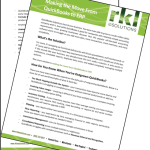
If you do business in the cloud, the start of a new year is an excellent time to review the law, called the 5Cs of Cloud Finance, which lists the essential top-level performance indicators for businesses:
- CMRR, ARR & ARRR: Committed monthly recurring revenue, annual recurring revenue, and annual run rate revenue. In its report on the 10 laws of Cloud Computing, Bessemer Venture Partrners noted that, “Many leading cloud companies…use CMRR as the basis for everything from the financial model to the sales commission plan. This is the single most important metric for a cloud business to monitor as the change in CMRR provides the clearest visibility into the health of any cloud business.”
- Cash Flow. As their 2012 report pointed out, CMRR provides a good sense for the revenue health of your business, but is often disconnected from the so-called “cash health” of a company. Since cash management is critical to a business’s survival, you need detailed cash metrics.
- CAC: Customer acquisition cost payback period. This is a statement, in months, of the time to fully pay back your investment in sales and marketing. In other words, it helps you determine the “profitability” of these efforts.
- CLTV: Customer lifetime value. Bessemer defines this metric as the “net present value of the recurring profit streams of a given customer less the acquisition cost.” It’s critical to understand each customer’s lifetime value, because a profitable business is built on profitable customers.
- Churn and renewal rates: It’s extremely difficult and costly to grow your subscription business if you have moderate or high customer churn. Thus, according to Bessemer, the single biggest driver of long-term profitability for your cloud business (and thus valuation) is the renewal rate of your customers.
Get the numbers in your cloud-financials QuickBooks alternative
You can build your CEO dashboard to include all of the key business metrics above, and trust that this dashboard is giving you an accurate account of your overall corporate performance. For example, subscription revenue metrics such as MRR and ARR are key to accurately planning your investments in marketing, development, and sales. And insights from customer metrics including CAC and CLTV can help you better understand how to grow and retain customers while reducing acquisition costs.
However, you won’t find these vital statistics in QuickBooks or Excel spreadsheets. You need to follow another Bessemer law: Less is more. In other words, say no to on-premises, whether for internal systems or for product offerings—and say yes to the cloud.
For FP&A professionals, that means an integrated financial management (ERP) and corporate performance management (CPM) solution. Integration allows the data to move automatically between these two systems, so you can spend more time understanding and analyzing your key business metrics, not shuffling them between QuickBooks or other legacy system and spreadsheets. Plus, tight integration reduces errors, frees up finance’s time from low value-added tasks, and accelerates month-end reporting cycles.
To succeed in 2018 and beyond, SaaS and other cloud companies need to set their sights beyond legacy systems and spreadsheets. Look for a cloud-based QuickBooks alternative that delivers real, actionable insights to move your business forward.
QuickBooks -> ERP




